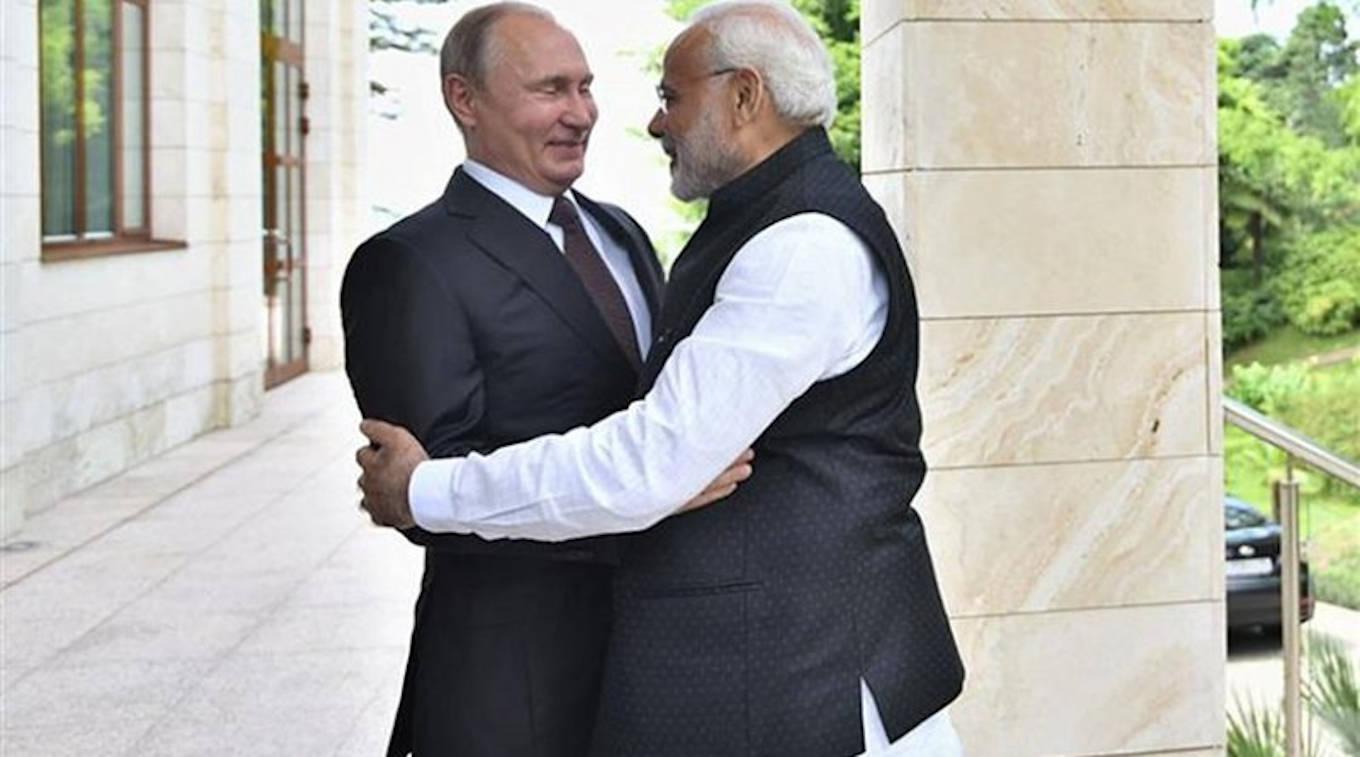-
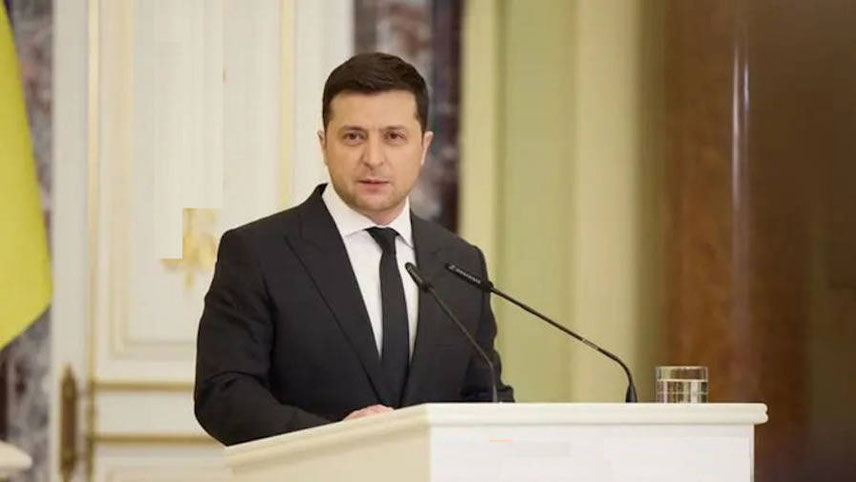
This is a war for the world. It is a war over freedom and democracy
Volodymyr Zelensky, President, Ukraine
“The only P5 country that helped us on some of our most important concerns has been Russia,” adds Nambiar, who was also India’s envoy to Pakistan. “Russia has been our steady supporter on our national security concerns, particularly with regard to Jammu & Kashmir. Thus, it is important for us also to be similarly sensitive to Russia’s national security concerns.” Russia has also often voted to support India in international forums, including refraining from criticism of its nuclear weapons tests in the 1990s. (The P5 are the five permanent members of the UNSC – China, France, Russia, the UK, and the US.)
Besides, Russia’s mutual relations with India and China make it a mediating force in the case of escalation between the two Asian neighbours. Russia is also a close partner in places like Afghanistan, where the American retreat has left India out in the cold. In fact, it was the Russians who helped the Indian embassy staff reach the Kabul airport to take the flight back home, after the Taliban captured power in Afghanistan.
Quid pro quo
As if our past inter-dependence on each other was not enough, India is now seeking Russian help to evacuate the Indian students caught in the Ukraine crossfire. This transpired after Prime Minister Narendra Modi spoke to Putin over phone for the second time within a week to seek help for almost 4,000 Indian students stuck in Kharkiv, the besieged country’s second largest city, which is witnessing ferocious fighting between the Ukrainian and Russian forces.
There are many sides to the Ukraine crisis and the factors underpinning it – geopolitical, economic and strategic. There is also the moral angle, which depends on which side of the fence you are sitting. But as the conflict rages, and the global community expresses its outrage, India’s desire to remain an ‘abstentionist’ power will be called into question.
The fact that it needs to remain on good terms with both sides as its primary focus remains the safe exit of Indians from the conflict zone is an important consideration but it cannot be India’s only focus in this crisis, Given our aspirations for global leadership and a permanent seat at the high table called UNSC, it may become necessary for India to engage more deeply with the conflict in Europe, which is now a global concern.
Ceasefire agreements intended to let civilians leave besieged Ukrainian cities have broken down and Putin has warned that Ukraine could lose its sovereignty, if its leaders continue to resist his forces. The US and European officials have quietly been making plans to support a Ukrainian government in exile.
Besides, the Putin military adventure in Ukraine has become a testing ground for a nation’s democratic resolve. As a groundswell of support for Ukraine continues to build across the world, many experts say the ongoing conflict is one not just for the future of Ukraine, but also for liberal democracy. As Volodymyr Zelensky, the embattled President of Ukraine, put it in an interview to CNN, “This is a war for the world. It is a war over freedom and democracy.”
-
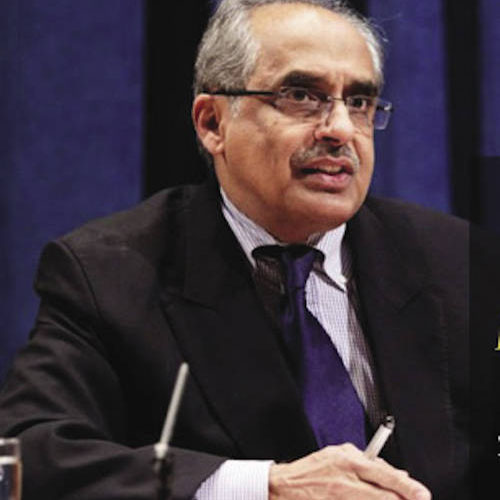
Russia has been our steady supporter on our national security concerns, particularly with regard to Jammu & Kashmir. Thus, it is important for us also to be similarly sensitive to Russia’s national security concerns
Vijay K. Nambiar, India’s permanent representative to the UN (2002-04)
Biden’s democracy thrust
The problem for India is that unlike the Trump era’s wink-and-forget policies, one of the enduring themes of Joe Biden’s US presidency has been promotion of democracy and the need to confront autocracies. Recently, in his State of the Union address, Biden came down heavily on the Russian invasion of Ukraine and proclaimed “an unwavering resolve that freedom will always triumph over tyranny”. Earlier, at the Summit for Democracy in December, he evocatively said, “Democracy doesn’t happen by accident. We have to defend it, fight for it, strengthen it and renew it.” As leader of the world’s largest democracy, Modi had invoked India’s hoary democratic traditions to applaud this sentiment.
Europe has now risen as one against Putin’s war, which threatens Ukranian democracy in case Putin succeeds in installing a puppet regime there. Germany, the richest country in Europe, was once considered the weak link in the Western coalition because of the Nord Stream 2 gas pipeline project, which has not been hit by sanctions and aborted. But, now, Germany has risen above economic considerations and fully thrown its lot with the European and American partners to stand up against Putin’s war in Ukraine.
The charge sheet
The Russian leader’s critics believe that, during his two decades in power, Putin has repeatedly undermined democratic movements and popular uprisings, including those in Syria and Belarus. He has meddled in Western elections. And he has also deployed Russian troops to enforce his will, including in Georgia and Crimea. They hold the view that his invasion of Ukraine is a significant escalation of this behaviour – and he must be held to account for it.
On the other side of the spectrum are countries such as Iran, Belarus, Syria, Venezuela and China that have extended their support to Moscow, blaming outright the US and Western allies for their ‘expansionist policies’. China, of course, is a canny player, in a class of its own. Beijing knows that a significant part of Putin’s continued belligerence is based on the assumption of finding considerable comfort from it. It hasn’t quite stood beside Moscow, as it is not condoning the death and destruction in Ukraine and has advanced the formula that were Ukraine to agree to be a neutral country (like Switzerland) and not seek the embrace of NATO, the strife can end.
Many believe that such a proposal could not have been made without consultations with Moscow. As a long-term strategy, China would not mind a resource-rich but weakened Russia seeking its help. There’s much that Beijing can extract from such a relationship if it wants to.
Different reasons
When India, along with China and the United Arab Emirates abstained from a UN Security Council resolution to officially condemn the Russian action, each country had different reasons for it. Saudi Arabia, which has also refused to condemn Russian actions, has not issued a statement following the invasion and will not increase oil production to bring down spiking prices following the crisis. The Emir of Qatar has also called for ‘all parties to exercise restraint’. The decision of the Gulf states to split with the US shows a growing willingness to step out of America’s shadow. But the UAE later changed its stand and even supported the UN resolution.
-
Democracy doesn’t happen by accident. We have to defend it, fight for it, strengthen it and renew it
So far, India’s balancing act between Moscow and Washington is neither here nor there. While the Modi government hasn’t offered outright support for Western positions or sanctions, because that would mean abandoning Moscow, it has called for a return to diplomacy and engaged with Moscow’s adversaries, including Ukraine – seemingly a break from the past.
The signal it has tried to send out on India’s abstention was that, while it was uncomfortable with the position that Russia has taken, it was difficult for it to voice it in public. It may have won New Delhi a breather as Moscow welcomed India’s neutral stand. But for how long?
Till now, the US has acknowledged that India has a relationship with Russia that is distinct from the relationship that it has with the US. Even after India abstained from the UN vote, the US said the two countries had ‘a close relationship’ and were in regular discussion about ‘our shared concerns’. Still, murmurs in Washington and western capitals are growing.
Sanctions
In the past too, when India bought a $5.4 billion Russian missile defence system, both sides made light of suggestions that the deal violated American sanctions, namely Countering America’s Adversaries through Sanctions Act (CAATSA), saying negotiations started before the measure went into effect in 2017. James O’Brien, nominated by President Biden to oversee sanctions policy at the State Department, said in his confirmation hearings that, while the US was discouraging the purchase, any prospect of penalising India would have to be weighed against ‘important geostrategic considerations, particularly with the relationship to China’.
But, now, as western nations ratchet up sanctions on Russia, India will come under increased scrutiny. Historically, India has continued bilateral trade during moments of geopolitical tension through currency arrangements that date to the Cold War. For instance, India initially found ways to work around the American sanctions on Iran by importing oil and settling accounts largely in Indian currency. But it had to seek oil from other sources after the Trump administration in 2019 closed that loophole.
Russian grip
While India still depends on Russia for more than 50 per cent of its military equipment, it has stepped up its supplies of critical military equipment from the US significantly in recent years. Along with Australia and Japan, India and the US are co-operating on maritime security in the Indo-Pacific, as part of the Quad alliance. If push comes to shove, then India can seek support from these countries. But can it really free itself from the Russian bear hug?
India’s military assets are of Soviet and Russian origin, necessitate continued servicing, maintenance, overhaul and, in some instances, upgradation by their original equipment manufacturers (OEMs). The bulk of the IAF’s 30 fighter squadrons, for instance, operate Russian aircraft, including some 272 multi-role Su-30MKIs fighters, which are awaiting an upgrade to ‘Super Sukhoi’ standards, by fitting them with 5th generation features and rendering them capable of delivering a heavier weapons load.
The spate of additional sanctions imposed by the US and its NATO partners on Russia, following the ongoing Ukraine standoff, will adversely impact India with regard to materiel supplies for the weapons systems used by our armed forces, which are dependent upon Moscow. The prospect of interrupted and interminably delayed Russian defence kits will in turn impact our operational readiness. This may acquire ‘grave ramifications’ at a time when India faces a collusive threat along its disputed northern and western borders from Pakistan and China, operating in tandem.
Security analysts aver that irrespective of the rapidly evolving Ukrainian situation, India would need to forge long-term alliances with advanced material producing countries to eventually replace Russian equipment, in addition to ‘realistically’ beefing up its domestic defence manufacturing.
-
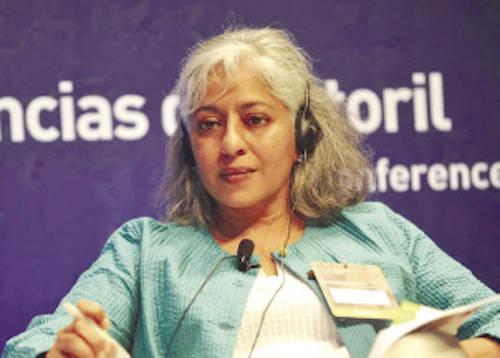
We have ourselves faced invasions across our land borders and it is in our interest to fortify the non-aggression principle
Radha Kumar, Policy analyst
Military dependence
Radha Kumar, policy analyst and one of the three interlocutors for Jammu & Kashmir appointed by the Manmohan Singh government, feels that arguments about Russia being our largest arms supplier, a dependable ally and a vote against Russia pushing it into China’s arms have been out of date since the end of the Cold War three decades ago, and Putin’s rise 20 years ago.
“More dangerously still, they reveal a fatalism towards India’s own national security interests that will only damage us further as time goes by. Yes, Russia is our largest arms provider and our supplies will be hit, if we vote against it. But no, Russia is not a reliable arms provider; it has not been one since Putin came to power. Arms supplies are frequently long-delayed and Putin had used the delays to up the prices, sometimes even double them,” she says.
In fact, it is our failure to significantly reduce military dependence on Russia that is responsible for our finding ourselves between a rock and a hard place today, Kumar feels. “If we do not fast-track the reduction of this dependence now, we will make ourselves even more vulnerable to the headwinds of the new Cold War that Putin and Xi are attempting to spearhead.”
At the risk of sounding cynical, adds Kumar, Russia’s unjustifiable invasion of Ukraine opens new opportunities for India, in the same way that it has strengthened the Trans-Atlantic Alliance. Support for Ukraine allows both principle and national interest to fuse. “We have ourselves faced invasions across our land borders and it is in our interest to fortify the non-aggression principle. Internationally, we are likely to find more support from the US and Europe, as well as Quad partners Australia and Japan, to fast-track our long-overdue military modernisation. Globally, Russia’s veto had pointed the problem with the UNSC: not only does it have to be expanded, but the veto power also has to be replaced, perhaps with a minus-one formula on such a critical issue as the invasion of one country by another.”
Trade logjam
There are other reasons for Indian needs to recast its ties with Russia. Bilateral trade is stagnating, despite our best efforts to amp it up. In fact, the small volumes betray a major weakness of our ties. In 2016, the Putin-Modi summit put a target of $30 billion on trade and $15 billion in investment by 2025. Whereas mutual investment goal has already been crossed, bilateral trade figures still highlight a languishing prospect. Both countries had fallen short of the previous target envisioned in 2011 to increase trade to $20 billion by 2015.
With America and China – despite the bad political relationship with the latter – India was at one point trading to the tune of almost $100 billion each, while commerce with Russia has peaked about a mere $10 billion a year (which is just 1.3 per cent of our total trade). The reason is again plain to see: while most of India’s economy is now in private hands, Indo-Russian economic ties still rest on government-to-government agreements.
Indeed, one of the factors leading to stagnation in bilateral trade has been the over-dependence on the G2G (government-to-government) mechanism, which fosters delays when compared to B2B (business-to-business) mechanism. Also, after the old model of Soviet-Indian economic relations collapsed in 1991, trade volumes plummeted. The USSR used to be among India’s top three economic partners; the Russian Federation’s current rank is in the 20th-25th range (see box: War may hit trade plan).
-
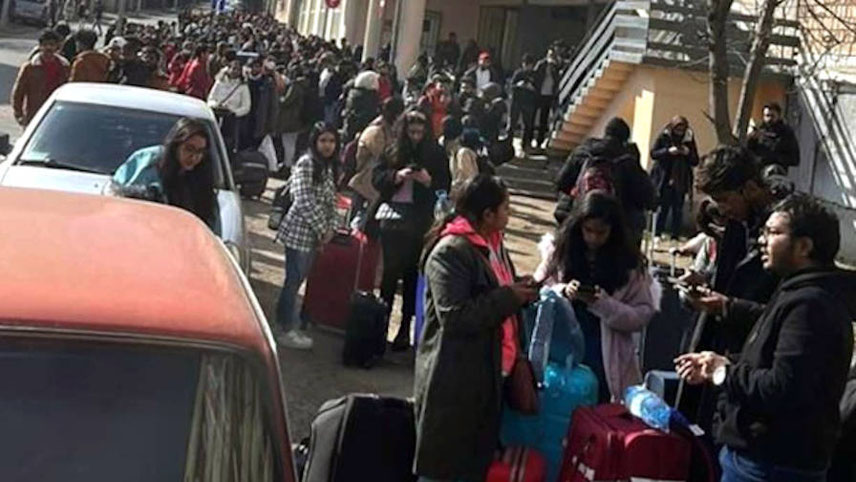
Indian students in Ukraine: stuck in the besieged country
Though Mikhail Gorbachev’s perestroika era and Boris Yeltsin’s privatisation programme did free some areas from state control and led to the rise of business oligarchs, such a transformation did not occur in a majority of Russian businesses, which trade with India, mostly in the sphere of energy with companies like Rosneft and Gazprom. The state also remains the controlling entity in the defence business.
Russians Eurocentric
For all their professed pivot to Asia, Russia and its current elites remain Euro-centric to the core and have little time or love for India. Russian oligarchs prefer English football clubs, media outlets and European real estate to Indian investments. Their children are found in the playgrounds of Europe. The Russian and Indian business communities are largely uninterested in each other’s countries, where they see few opportunities for themselves.
This may also have something to do with the fact that the Indian and Russian economies remain far less complementary than those of China and Russia. Manmohan Singh, former Prime Minister, sought to bring businessmen of the two countries together by setting up the India-Russia CEOs Forum, with Mukesh Ambani, as one of the co-chairmen. The forum was a non-starter.
In recent years, India has tried to encourage connections between industries and emphasised on holding B2B events to explore trade and commerce opportunities. St Petersburg International Economic Forum now has an MoU with Confederation of Indian Industries for regular institutionalised B2B interactions and exchanges. This emphasis has been visible in the recent visits of Indian delegations to Eastern Economic Forum, Arctic Forum, and the St Petersburg International Economic Forum. But the results have been anything but spectacular.”The Russians don’t appear to be interested in doing business here,” said a source in an industry chamber.
On the other hand, Russia’s private business players say that they find it easier and more profitable to do business with China than with India. Even Russian media outlets have little presence in India. Tourism and cultural contacts, which were strong during the Soviet era, are in low gear. As a result, the Russian public has limited knowledge and understanding of what is going on in India. The pandemic has further severely limited these ties. Indian students once went to study at Russian universities. But now they are going to places like Ukraine instead.
Suggestions ignored
On the eve of Putin’s visit to India last year, the Carnegie Moscow Centre put out an instructive paper pointing out that, if the Indo-Russian partnership is to live up to its name in the decade ahead, these issues must be squarely addressed. “The Russians need to step back and decide what is it that they want from the Indian connection, what the opportunities for and obstacles to this desired state of relations are and what must be done in order to achieve their objectives. From this perspective, three actions are of central importance for Russia, as it proceeds along this path: to rethink where India is headed after its economic rise, to adjust to the latest developments like New Delhi’s embrace of Indo-Pacific strategy, and to upgrade relations with India to the level of its strategic partnership with China,” the paper said.
-
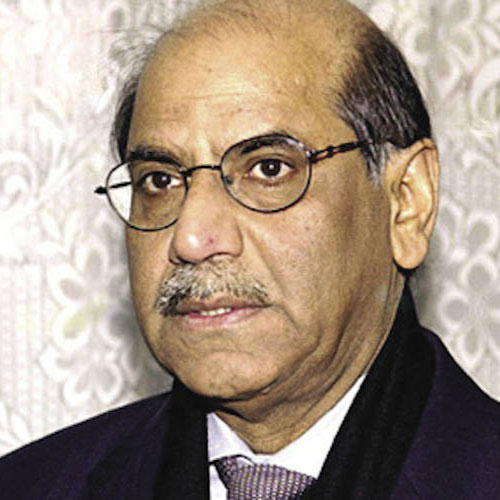
Those who remained ambiguous in their reaction to Russian invasion seem to be changing their stands so as not to be stranded on the wrong side of history
Shyam Saran, Former foreign secretary
However, there is no evidence to suggest that Russia has taken these suggestions seriously. Impartial observers do not fail to discern a new patronising attitude towards India with shades of Czarist imperialism. Should New Delhi then bow and scrape before Moscow?
India will have to recalibrate its ties with Russia also because the arguments on its ‘neutral’ and ‘nuanced’ position may not wash for long, in view of Putin’s current actions and its increasing isolation. India’s approach vis-s-vis Putin’s dangerous gambles like putting nuclear weapons on alert and attacking nuclear plants, not to mention the damage being caused to economies the world over, is bound to cause murmurs in Washington and other western capitals. There’s also the issue of India’s citizens being in grave danger from Russian assault. Clearly, the ground is shifting. So, the question arises: can India continue to hold on to its ‘abstain’ position indefinitely?
Moscow’s China angle
There is another thing that our foreign policy mandarins will have to keep in mind. China is India’s biggest threat and any country that depends on China must surely be a less-than-ideal strategic partner. Is that the Russia that India’s foreign policy establishment, manned by dark-suited bureaucrats, wants as a strategic partner in the years to come?
Warning bells should have rung for India when Moscow decided to join Beijing’s flagship project of BRI (Belt & Road Initiative) which India has snubbed, as it violates Indian territorial integrity by passing through PoK (Pakistan-occupied Kashmir). While Russia sees this as an opportunity to utilise BRI infrastructure to widen Euro-Asian Economic Union’s reach and create a ‘Great Eurasian Partnership, India is worried about competing in a market flooded by Chinese products.
New Delhi has expressed an increasing ambition to invest and develop infrastructure, even in partnership with third countries like Japan, in Russia’s Far East. But, since 2015, Chinese investment has made up for about 85 per cent of the total foreign investment in the RFE region. China has been blocking presence of other players in the region, especially India. Indian businessmen in Moscow feel that the Chinese have made headway in RFE because of open encouragement from the Russians.
Many feel that the Beijing-Moscow nexus which has been proliferating in recent years, after the two signed a slew of energy deals, will only become firmer in the coming weeks.
Also, if Russia continues as it does, how long will it be before murmurs in Washington grow about the credentials of one of its Quad partners? And how will we diplomatically counter such concerns? As for Russia’s response to India changing its stance, Russia needs India’s orders, as much as India needs Russia’s weapons. Times have changed. So must India’s diplomacy. Time is running out. As Shyam Saran, former foreign secretary, recently pointed out, “Those who remained ambiguous in their reaction to Russian invasion seem to be changing their stands so as not to be stranded on the wrong side of history.”
-
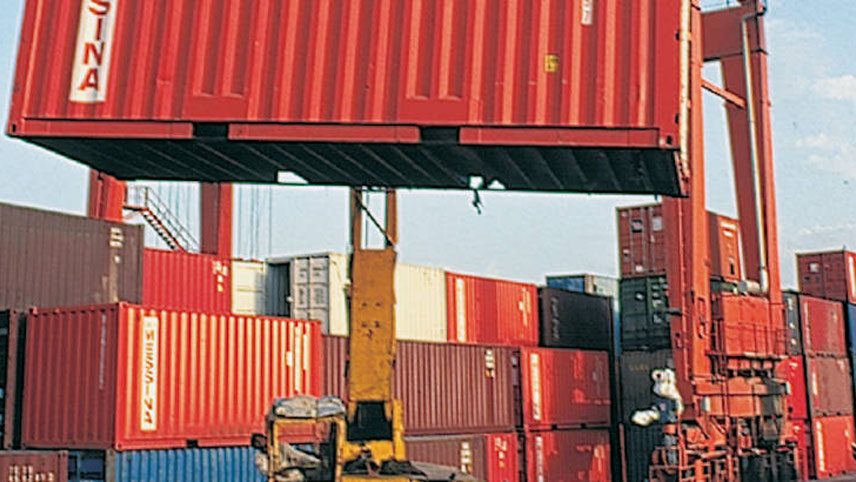
Is it possible to increase the bilateral trade from $10.11 billion of 2019, to $30 billion in 2025?
War may hit trade plan
Can Russia ever be a serious trading partner of India? And is it possible to increase the bilateral trade from $10.11 billion of 2019, to $30 billion in 2025? All along, while India has considered Russia a strategic partner, trade has been a weak point in our relationship. The two sides had been planning better connectivity measures to boost trade. But these moves may now get undermined by the war in Ukraine and sanctions on Russia that are following.
India’s top exports to Russia consist of packaged medicaments, products like broadcasting equipment and tea, while Russia’s top exports to India consist of energy sector commodities like crude petroleum, coal briquettes and rough diamonds. This means that increasing bilateral trade will either involve increasing the share of these commodities or the two countries will have to look into diversifying the trade baskets.
While the first option poses several issues due to a comparatively stagnant phase of economies in both countries, the second involves several issues like finding and establishing a space in the market as well as improving connectivity between the two countries to make market penetration possible.
Several long-standing issues for India and Russia have created difficulties for expanding trade, either bilaterally or even through multilateral mechanisms. Besides the most highlighted bottleneck of poor connectivity posing issues for transportation of goods in economically attractive timeframe, lack of awareness by private entities about each other’s economies (beyond the energy sector which is overseen by governments) and bureaucratic delays have been the often discussed issues. After years of discussions, India and Russia began co-ordinating in several projects and policies in this regard.
INSTC (International North-South Transportation Corridor) is a 7,200- km long multimodal network of ship, rail, and road route for moving freight between India, Iran, Azerbaijan, Russia, and Central Asia. It was envisioned in 2000 and since an agreement in 2002 between Iran, India and Russia, the network has seen some development. The western wing of the INSTC became operational in June last year, connecting India and Russia via Iran and Azerbaijan. In comparison to an average time of 35-40 days for cargo containers travelling between Mumbai and St Petersburg, the time through the INSTC has been shortened to 20-22 days.
-
The biggest collateral victim of the Ukraine war could be EAEU, the flagship Russia-led project for creation of a trade bloc connecting Eurasian economies with the broader Asia-Pacific region
For India, the operationalisation and success of INSTC was to lead to tapping of new markets and access to energy resources from Central and North Asian markets which till now have lagged due to accessibility issues. For Russia, it would have given a fillip to the Russia-led Eurasian Economic Union (EAEU) plans, which Moscow hopes to expand with India as a full member. Further, INSTC is envisioned to get synchronised with projects like the upcoming North Sea Route, thus making the INSTC a scalable connectivity project.
Another connectivity project envisioned by India and Russia is the more recently announced Chennai-Vladivostok maritime corridor, aimed at enabling cargo shipping between the two eastern ports of Chennai (India) and Vladivostok (Russia) in a reduced time of 24 days, in comparison to more than 40 days normally needed for shipping from India to Russia’s Far East (RFE) through Europe. The RFE is a relatively untapped region in terms of trade and investment potential.
The biggest collateral victim of the Ukraine war could be EAEU, the flagship Russia-led project for creation of a trade bloc connecting Eurasian economies with the broader Asia-Pacific region (which can serve as an alternative to European Union). While the membership already consists of Armenia, Belarus, Kazakhstan, Kyrgyzstan, and Russia, the bloc has been gradually expanding in recent years through FTAs (Free Trade Agreements) with peripheral, developing and developed economies like Iran, Vietnam, Singapore and Serbia. More trade agreements, which can serve as major additions to the bloc are currently underway.
India was being considered as a special case for inclusion in this scheme of things because of its huge market. In turn, India could have benefitted from the opening of the untapped markets in the Eurasian region.
